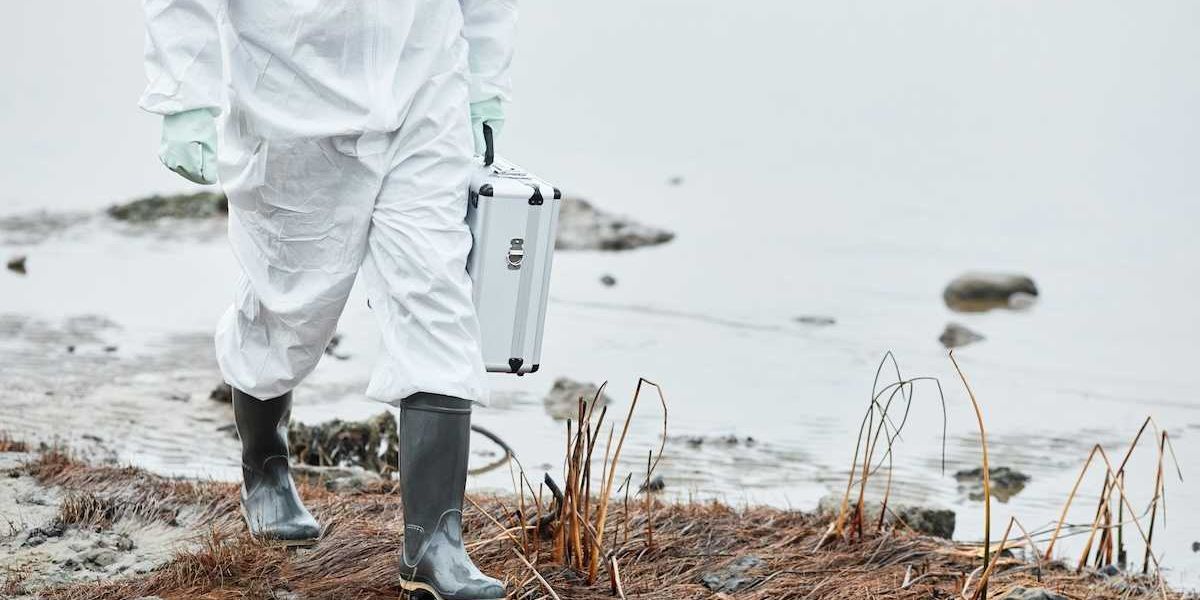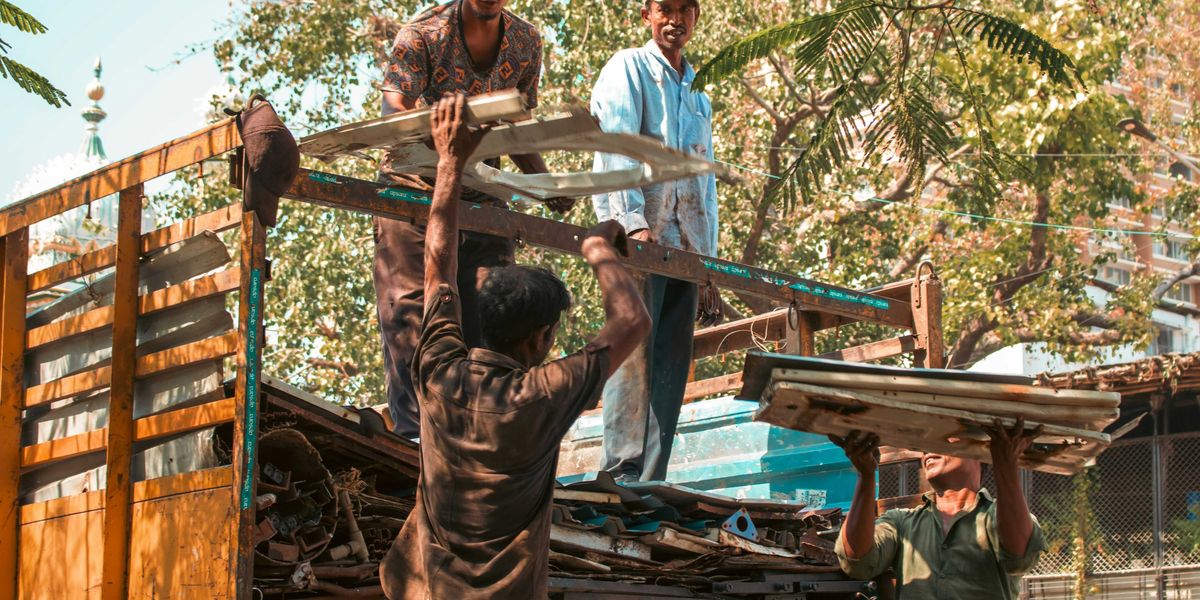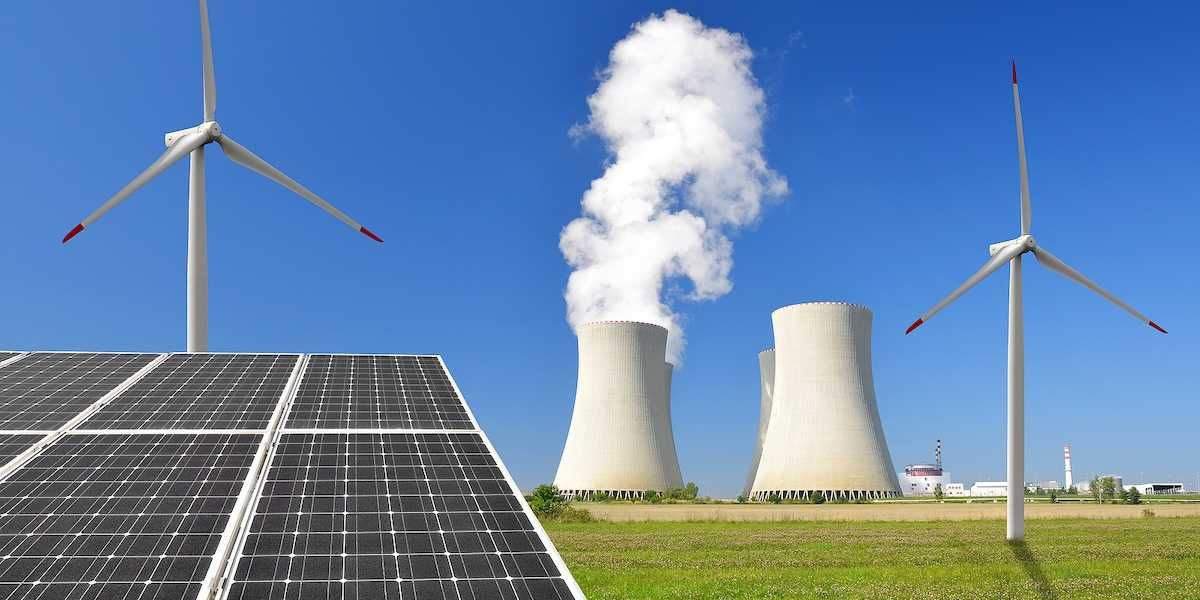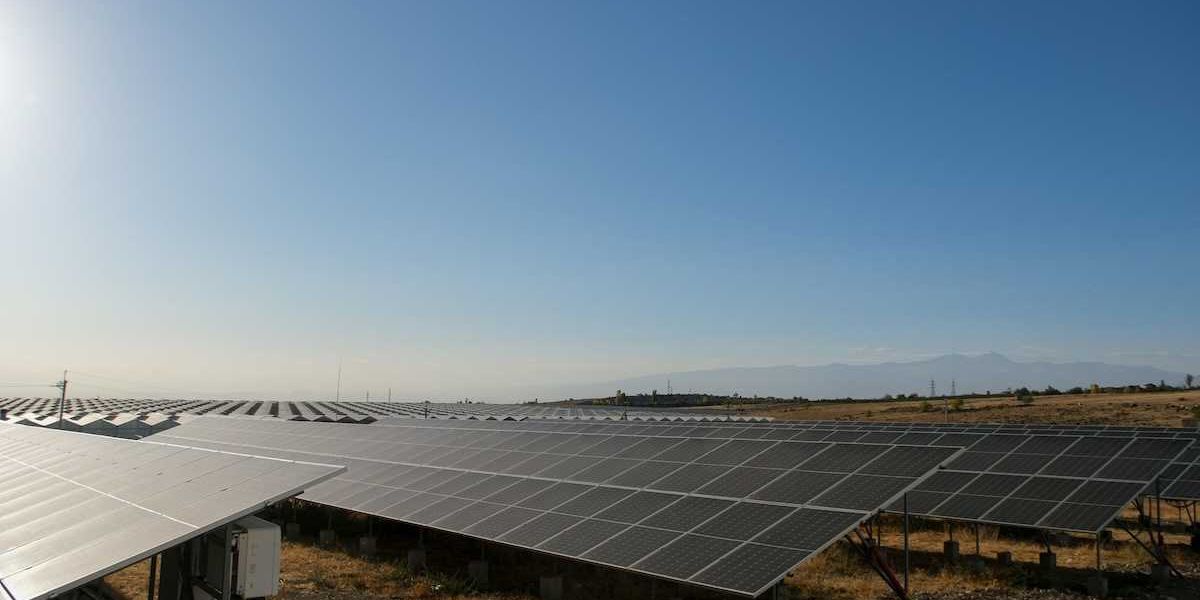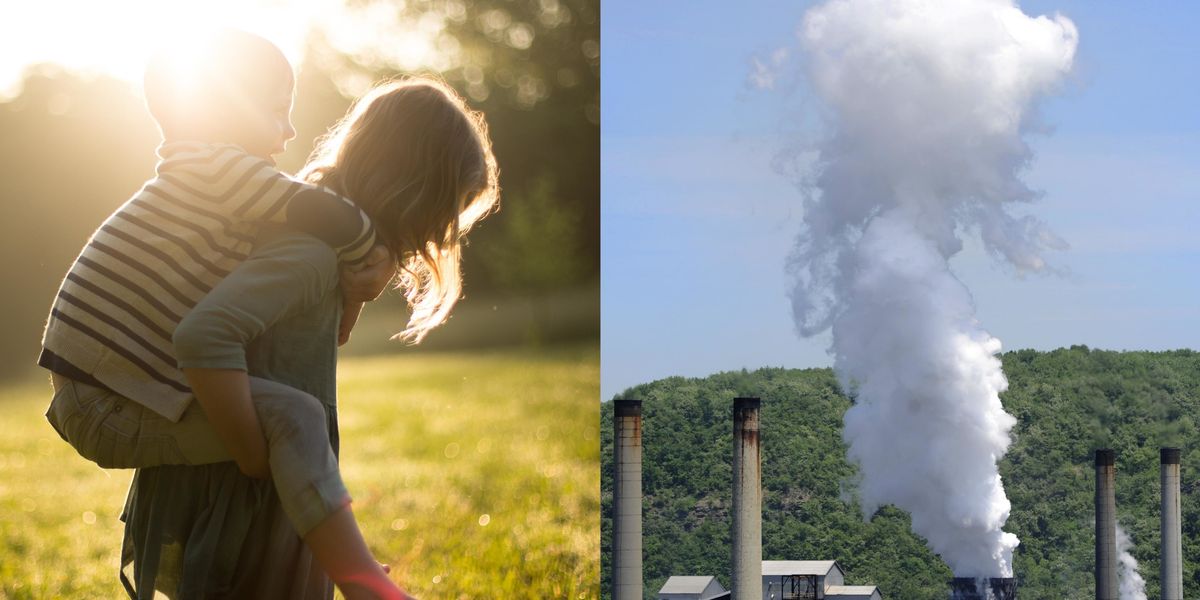
Kids in Southwestern Pennsylvania are exposed to carcinogenic coke oven emissions at shockingly higher rates than the rest of the country
"Kids breathe about four times as much air as an adults, so they have proportionately more of these chemicals in their bodies."
Editor's note: This is the third story in our series on cancer and air pollution in Southwestern Pennsylvania.
PITTSBURGH—Six-year-old Madelina DeLuca was diagnosed with leukemia when she was just 23 months old.
"She had some bruising and we couldn't figure out where it came from," Madelina's mom, Kristin DeLuca, told EHN.
Madelina's doctors did a series of tests, but initially couldn't figure out what the cause was. Eventually the bruising got worse and Madelina developed stomach pain. After several months of uncertainty, they got unusual blood test results, and in November of 2014, Madelina had her first bone marrow biopsy.
"She got a fever after the biopsy, so they kept her in the hospital as a precaution," said Kristin, who has spent her whole life in the Pittsburgh region. "Then it all happened really fast. Her test results came back the next day, she was diagnosed with acute myeloid leukemia, and within two days she had a port in her chest and had started chemo. It was very overwhelming."
In 2015, while Madelina was undergoing treatment, a photo of her embracing another young cancer patient while the two looked out a hospital window at the Pittsburgh skyline went viral. The image was shared around the world and garnered national media attention.
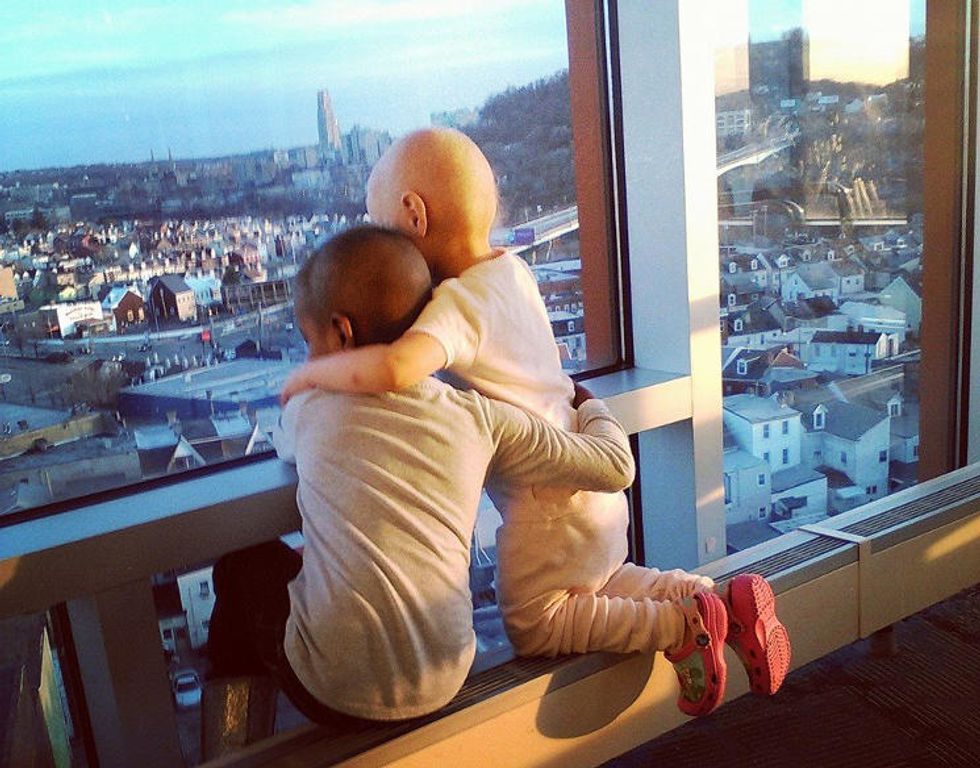
Credit: Tazz Jones/Facebook
The other girl in the photo was 5-year-old Maliya Jones, also a Pittsburgh resident. Her mother, Tazz Jones, snapped the candid picture and wrote, "This is the perfect example of love" when sharing it on Facebook.
Tazz expressed hope that the girls would stay friends as they got older and have the photo to commemorate the moment they met and the difficulties they'd both overcome.
"Unfortunately," Kristin told EHN, "Maliya passed away from her childhood cancer. Throughout the course of Madelina's treatment, she made a lot of friends who weren't able to defeat it."
After a long, difficult journey, Madelina is now a healthy, happy kindergarten student. She takes ballet and gymnastics, and loves riding her bike, playing outside with her older sister, and swimming.
Kristin is grateful every time another one of Madelina's regular cancer scans comes back negative.
But she refuses to forget what they went through—she still works with families of other kids who are fighting cancer, and raises awareness about the prevalence of the disease among children.
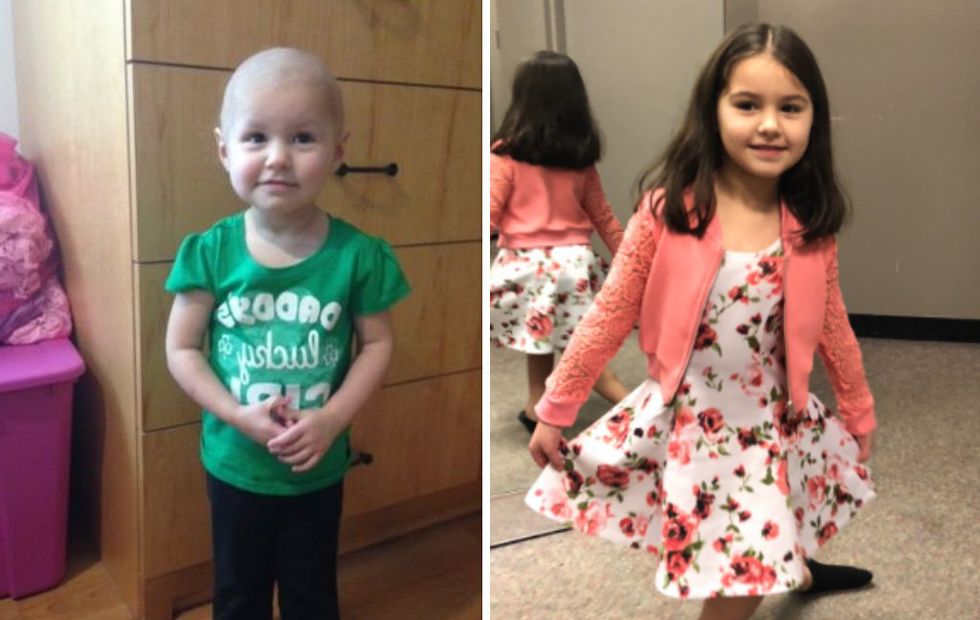
Madelina DeLuca is now a healthy, happy kindergarten student. (Credit: Kristin DeLuca)
"It's something that happens more frequently than we were first aware of," she said. "Especially, it seems, in the Pittsburgh region."
Southwestern Pennsylvania is, in fact, a hotspot for cancer. Allegheny County, which encompasses Pittsburgh, is in the top 3 percent of all U.S. counties for risk of cancer caused by air pollution, and children, with their still-developing bodies, are particularly vulnerable to cancer risk from exposures to airborne carcinogens.
An EHN analysis of the EPA's most recent National Air Toxics Assessment data shows that kids in Allegheny County are exposed to higher levels of a number of cancer-causing chemicals—including diesel particulate matter, formaldehyde, benzene, arsenic, naphthalene, and in particular, coke oven emissions—than kids in most of the U.S. as a direct result of industrial polluters in the region.
One of these polluters, U.S. Steel's Clairton Coke Works, is responsible for a lot of these airborne carcinogens. The company has dominated headlines lately due to escalating fines for air pollution violations, childhood asthma near the plant, and increasingly tense community protests.
The problem has gotten so bad that environmental groups including Earthjustice, Citizens for Pennsylvania's Future, Pittsburgh's GASP (Group Against Smog and Pollution), and the Sierra Club filed a lawsuit against the Environmental Protection Agency (EPA) on April 15 for not properly regulating coke oven emissions across the country, specifically citing ongoing pollution at the Clairton Coke Works as one of the reasons for the suit.
In 2005, the EPA issued regulations for coke oven batteries, but agency representatives admitted at the time that they didn't actually know whether the regulations were adequate to protect the health of communities nearby. The EPA promised to further review the regulations, but 14 years later, nothing has happened.
Despite the ongoing media attention directed toward U.S. Steel's legacy of pollution in Southwestern Pennsylvania, the effect of the carcinogens the company pumps into the air on the region's most vulnerable population—children—is often left out of the conversation.
"Children's developing cells and biological systems are also more sensitive to many carcinogens than adults' are," Dr. Philip Landrigan, pediatrician, epidemiologist and Dean for Global Health at Icahn School of Medicine at Mount Sinai, told EHN.
“Kids have proportionately more of these chemicals in their bodies”
Cancer isn't caused by a single event or environmental exposure, but a unique set of conditions or events that produces cancer in an individual person. The concept has been visualized by scientists as a pie chart with a different cancer cause in each slice—things like inherited genetics, high body mass index, and mutated genes from exposure to tobacco or air pollution.
We don't know exactly what each person's unique pie chart includes, but we do know that if even one part of the pie stays missing, cancer won't occur. This means some people are at higher risk because of their zip code—including children born in the Pittsburgh region.
As a result of the steel industry, kids in Southwestern Pennsylvania are exposed to carcinogenic coke oven emissions at shockingly higher rates than kids in the rest of the country. Coke ovens heat coal to extremely high temperatures to convert it into coke, which is used to manufacture steel, and emissions from such plants include a mix of chemicals like formaldehyde, cadmium and arsenic—all linked to cancer.
EHN's analysis revealed that the total exposure concentration (or average level of exposure) to coke oven emissions for residents of Allegheny County is 99 percent higher than it is for the U.S. population as a whole (0.0111678796 micrograms per cubic meter of air vs. 0.000102, respectively), and 88 percent higher than Pennsylvania's population as a whole.
Allegheny County is more densely populated than the entire U.S. or the entire state of Pennsylvania, which contributes to that gap, but a stark contrast persists when comparing Allegheny County with other counties that have populations of a similar size: The total exposure concentration for coke oven emissions in Cuyahoga County Ohio, which encompasses Cleveland, is zero, as it is in Hennepen County, Minnesota, which encompasses Minneapolis. Kids on the other side of the state in Philadelphia also enjoy zero exposure to coke oven emissions.
Our analysis revealed that of the 100 U.S. census tracts with the highest total exposure concentration of coke oven emissions in the country, 77 percent are in Allegheny County, and 83 percent are in Southwestern Pennsylvania.
In other words, the vast majority of airborne carcinogenic coke oven emissions in America originate in Allegheny County.
The quantities sound small, but here's how coke oven emissions in the region translate to cancer risk, according to the EPA's National Air Toxics Assessment: For the average American, the risk of getting cancer from breathing in coke oven emissions is 0.10 in a million. For residents of Allegheny County, it's 11 in a million.
The population of Allegheny County is about 1.2 million, so we can expect 13 or 14 lifetime residents to get cancer at some point in their lives as a direct result of coke oven emissions.
U.S. Steel's Clairton Coke Works is the nation's largest producer of coke, and the last such facility operating in Southwestern Pennsylvania. The facility is home to 10 coke oven batteries that produce approximately 4.3 million tons of coke annually, and U.S. Steel has been charged with repeated and ongoing violation of clean air laws at the plant. Essentially all cancer risk from coke oven emissions in the region can be attributed to this plant. U.S. Steel did not return our requests for comment.
In the census tract with the highest cancer risk as a result of coke oven emissions in the nation, 89 people per million are expected to get a cancer diagnosis as a direct result of coke oven emissions. That census tract is in Allegheny County. For the most polluted census tract in Clairton, the cancer risk from coke oven emissions is 63 per million.
That's the cancer risk just from coke oven emissions—not from the cumulative effect of all air toxics in the region.
According to a more in-depth analysis of earlier NATA data, the total estimated lifetime risk of getting cancer as a direct result of exposure to air toxics across a 10-county region surrounding Pittsburgh is greater than 120 lifetime cancer diagnoses per one million people. The EPA's benchmark for "acceptable" risk from these toxics in the air is one per one million. In some places, like Clairton, lifetime cancer risk exceeds 1,000 lifetime cancer diagnoses for every 1 million people.
It's worth noting that the EPA's most recent air quality data was collected in 2014, prior to the closing of the Shenango Coke plant in Allegheny County, which was one of the region's biggest polluters.
The year after the plant closed in 2016, nearby neighborhoods saw a 38 percent drop in ER visits for asthma, so levels of carcinogens in the air will likely decrease in the release of the EPA's next Air Toxics Assessment (they're released every 3 to 5 years).
The census tract with the cancer risk of 89 per million is located in Avalon, just across the river from Neville Island, the former site of the Shenango Plant, so cancer risk will likely drop in that neighborhood in the EPA's next assessment as a result of a large reduction in emissions.
"I don't think most Pittsburghers fully understand that our cancer risk is higher than almost anywhere else in U.S. from these industrial sources," Matt Mehalik, executive director of the Breathe Project, a coalition of 24 environmental organizations, told EHN. "We could all eat right and exercise and quit smoking, but we still have to breathe this air every day."
“Even at very low doses, bad things can happen.”
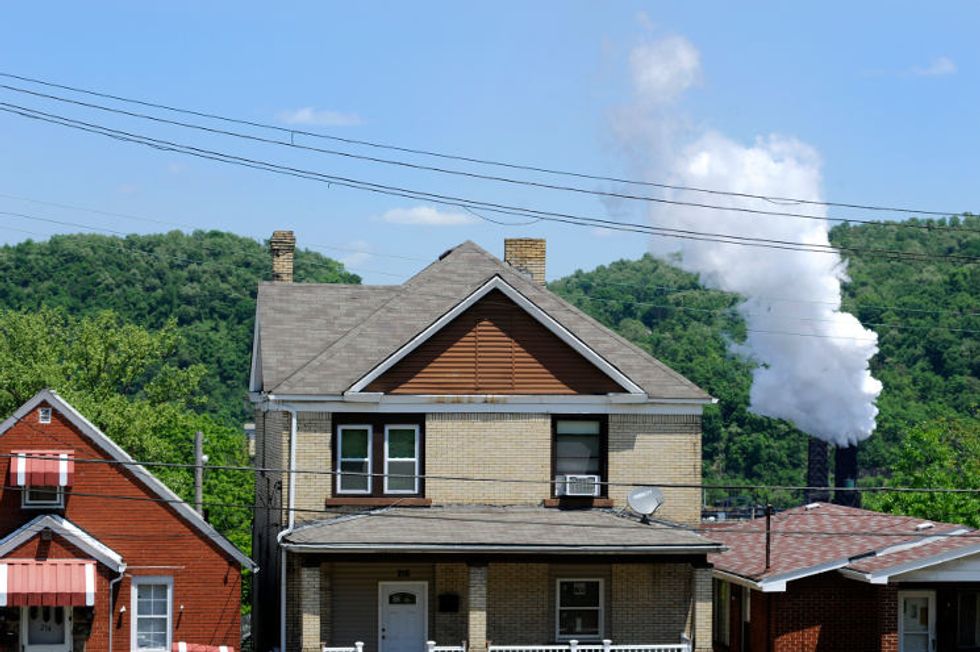
Homes near U.S. Steel's Clairton Coke Works. (Credit: Connor Mulvaney/EHN)
Landrigan, who is considered a leading expert on children's environmental health, said, "Kids breathe about four times as much air as an adults, so they have proportionately more of these chemicals in their bodies."
Because their enzymes aren't yet mature, kids have a reduced ability to detoxify their bodies and excrete chemicals that shouldn't be there, Landrigan explained. They're also more vulnerable because they're still undergoing complex development processes in their brains, immune systems, and reproductive systems.
"Thousands of steps have to occur in precise sequence during those developmental processes," Landrigan said. "If something gets in that disrupts that, even at very low doses, bad things can happen."
Pennsylvania, which has the third highest overall cancer rate in the nation, ranks sixth among U.S. states for childhood cancer rates—and Allegheny County's childhood cancer rate is slightly higher than both national and state averages.
Allegheny County saw an average of 20.6 cancer cases in people under the age of 20 for every 100,000 residents each year from 2011-2015 (the most recent years for which data is available), compared with 20.3 at the state level. The national average for the same time period is 18.2.
Meanwhile, nearby Somerset County has the second-highest childhood cancer rate of all reporting counties in the state, with an average of 31 cases a year per 100,000 people from 2011-2015.
And in neighboring Washington and Westmoreland Counties, the U.S. Centers for Disease Control and Prevention and state health officials are investigating a cluster of Ewing sarcoma, an extremely rare cancer that affects kids and teens between the ages of 10 and 20.
Nationally, fewer than 200 cases of Ewing sarcoma are diagnosed each year, but Washington County has seen six cases diagnosed at one school district (Canon-McMillon) since 2008, and Westmoreland County has seen 12 diagnoses since 2011.
Ewing sarcoma has "no known cause," in part because it's so rare there's little research on it. There are other cancers in the region that do have known environmental causes that are being included in CDC and DEP's investigations.
In addition to increasing the risk of childhood cancers, recent science indicates that exposure to cancer-causing compounds in the womb and during early childhood can also prime the body to develop cancer later in life.
"The thinking is that certain chemicals get into cells in human bodies and cause changes to the genes in those cells," Landrigan explained. "A single hit like that on a gene won't typically cause cancer—most cancers evolve over a span of multiple years or decades after five or six hits to the gene."
"But if a child goes through first two or three hits in early childhood," he added, "then that child is that much closer to developing cancer once they've become an adult."
In January, a group of doctors and researchers from around the country gathered in Pittsburgh to discuss the ways Southwestern Pennsylvania can begin to reduce cancer risk from environmental exposures. Dr. Margaret Kripke, professor emerita of the University of Texas MD Anderson Cancer Center, delivered the keynote address and said more focus needs to be put on prevention, including awareness of environmental exposures.
"Curing someone or being cured is viewed as a personal triumph, so everyone is focused on treatment," she said. "Prevention doesn't have a face. We don't know who we prevented cancer in, which is why it's easier to advocate for the fight for a cure than it is for prevention. But fighting for prevention is what we really need to do now."
“There’s no way an increase that rapid can be genetic”
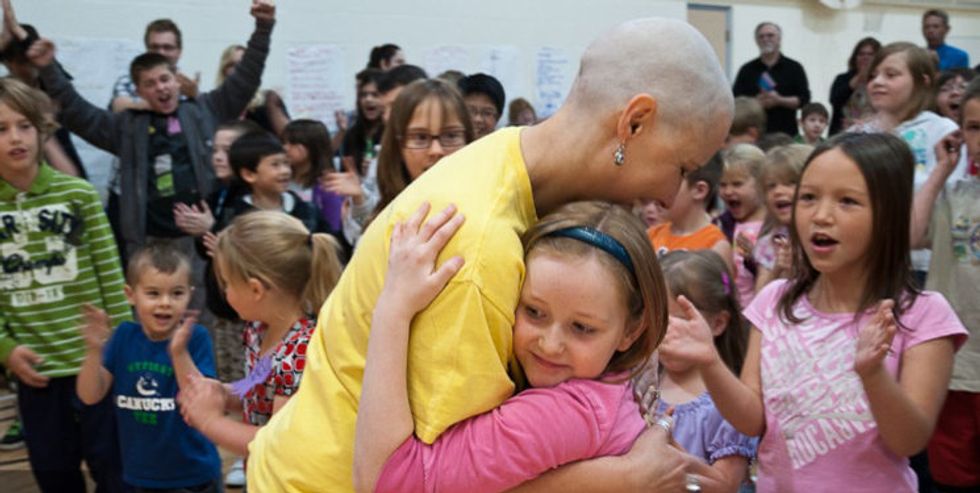
Credit: Christy Dean/flickr
Childhood cancer rates in Allegheny County have been generally on the rise since 1990, according to the Pennsylvania Department of Health's cancer registry.
That upward trend mirrors a national one: The overall rate of childhood and teen cancer in the U.S. has increased about 40 percent since researchers started tracking the disease in the early 1970s. While cancer is still rare compared to other childhood diseases, it's now the second-leading cause of death among children who survive infancy in the U.S. (after injuries).
Nationally, one in every 285 American children is now diagnosed with cancer before age 20.
"We have almost 50 years of records, so the increase has averaged almost 1 percent per year over a five decade span," Landrigan said. "There's no way an increase that rapid can be genetic. Genetic changes of that magnitude take place over centuries, not decades."
Some of the increase can likely be attributed to better testing techniques, Landrigan explained, but not all of them. This is particularly true of childhood leukemia, the most common form of childhood cancer, since the basic test—finding too many white cells in a blood sample and confirming diagnosis with a bone marrow examination—has remained the same.
"I believe it's a real increase we're seeing," Landrigan said, "and if it's not entirely explained by genetics or improvements in diagnostics, then by exclusion it has to be due to something in the environment." He added that "the environment," broadly defined, includes chemical exposures but also changes in diet and lifestyle.
A growing body of research links the disease to environmental exposures like pollution from traffic, exposure to pesticides and insecticides, and exposure to air toxics from industrial sources like the benzene, arsenic, and coke oven emissions that continue to plague Allegheny County.
A number of studies have also linked parents' exposures that occur before their children are even conceived to increased risk of childhood cancer for their kids.
Some good news
The good news is that medical advances have made us much better at treating childhood cancer.
While survival rates for some rare childhood cancers remains low, the survival rate for leukemia is around 85 percent. Brain cancer, the second-most common childhood cancer, has a similarly high survival rate. The overall 5-year survival rate for children and teens non-metastasized Ewing sarcoma—the rare cancer there's a cluster of in Washington County—is about 70 percent.
As a result of both the influx in childhood cancer and ever-improving medical advances, one in every 530 American adults ages 20-39 is now a childhood cancer survivor.
But treatment and survival are difficult. These children often lose their hair and endure side effects like nausea, vomiting, pain, behavioral problems and anxiety. The emotional impact to both the patients and their families can last a lifetime.
"Surviving cancer is life-changing for the patient and the family," Dr. Erika Friehling, a pediatric hematologist/oncologist at the University of Pittsburgh Medical Center's Children's Hospital, where Madelina DeLuca received her treatment, told EHN.
"Even seeing patients that completed treatment five to 10 years ago, they still carry many of those emotions. Some parents talk about almost a PTSD phenomenon coming back to Children's Hospital," Friehling said.
In addition to the emotional impacts, many kids who survive cancer often experience health problems related to treatment or survivorship: 60 percent of children who survive the disease experience health problems like infertility, heart failure and secondary cancers later in life as a result.
"We're also learning more about the neurocognitive impacts of undergoing chemotherapy as a child," Friehling said. "Specifically for the treatment of acute lymphoblastic leukemia, we're seeing some struggles in learning and developing more complex processing skills as kids get older, so we're beginning to put an emphasis on making sure those patients get extra attention as they're being treated or after being cured."
Kristin DeLuca said Madelina gets tested for heart problems and cognitive issues regularly since completing her treatment.
"There are a gazillion unfortunate side effects," she said. "Fortunately we haven't encountered any other than some very minor developmental delays...but as she continues to grow, they're definitely something we need to watch out for."
How parents can protect their kids

Madelina DeLuca (left). (Credit: Kristina DeLuca)
Children, like adults, are exposed to carcinogens in the environment in three ways: They consume them in the things they eat, absorb them through their skin, and inhale them in the air they breathe. Exposure to some carcinogens is inevitable, but there are also concrete steps parents can take to reduce their children's' cancer risk.
"If you can afford to do so, eat organic," Landrigan said. "We know families that eat organic have substantially lower levels of toxic chemicals in their bodies than people who eat so-called 'conventional' food. Parents can also minimize the use of chemicals in the home and especially pesticides in the lawn or garden."
He also suggested working with local schools to encourage them to minimize the use of chemicals in their cleaning products and on the playing fields—a task already being tackled by the Pittsburgh nonprofit Women for a Healthy Environment, which provides resources to schools with the aim of limiting the toxic exposures kids encounter in their learning environments.
Parents can also minimize the number of carcinogens kids absorb through their skin by buying personal care products that have been verified as safe by an independent third party, and can help raise awareness about environmental exposures and cancer by referring their kids' pediatricians to the CDC's online education module for environmental health, which counts toward required Continuing Medical Education credits.
While those things can help, every child living in Southwestern Pennsylvania has to breathe the region's air.
"When talking about broader hazards that affect the whole region like air pollution in Southwestern Pennsylvania," Landrigan said, "the only solution is political. Unless these industries suddenly decide to act like adults and regulate their own emissions—which hasn't happened historically—then regulators are going to have to step in and be the parent."
Regulators have increased their efforts to do that in recent months. The Allegheny County Health Department fined U.S. Steel for excessive pollution at Clairton Coke Works three times in less than a year. But there's still a role for policymakers to play in improving the region's air quality to protect kids from carcinogens.
"Individual doctors can speak out about the hazards and exert their influence, as many courageously do," Landrigan said, "but ultimately, elected representatives are going to have to stand up for children and do the right thing."



